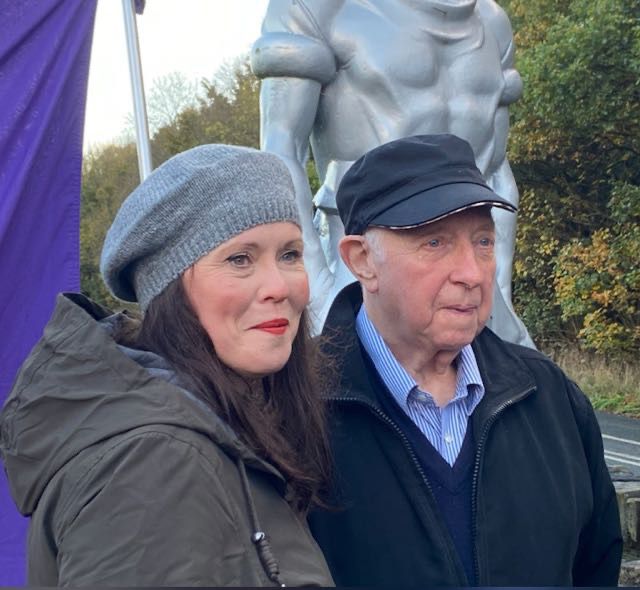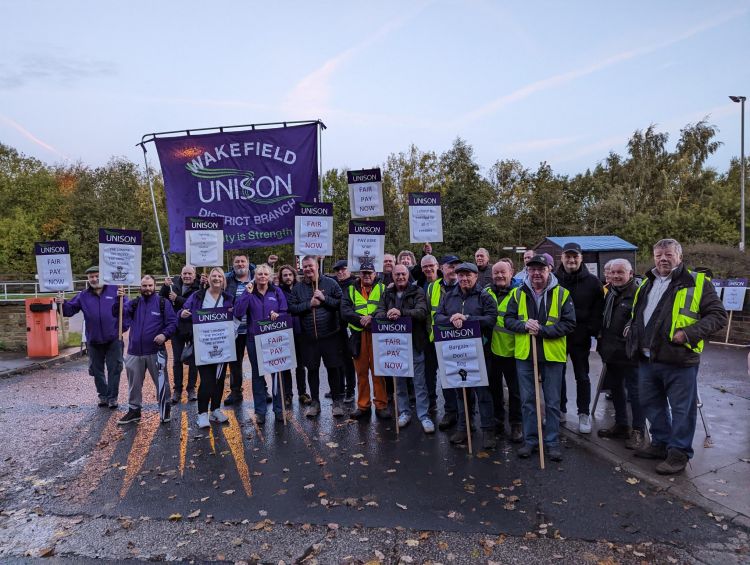UNISON reps extract a great pay deal for staff at the National Coal Mining Museum
Workers at the museum include ex-miners who keep the heritage of the coal industry alive for a new generation, by giving talks and tours of the underground tunnels at Wakefield’s former Caphouse Colliery. UNISON regional organiser Rianne Hooley talked to the TUC Solidarity Hub about the dispute.
Flat rate increase
Rianne told the TUC: “We went into the pay talks wanting a flat rate increase of £1,925 for every staff member.
“We didn’t want a percentage increase because, in the middle of a cost of living crisis, we wanted an offer that ensured the lowest paid staff got more.
The employers offered us less than half of what we’d asked for and claimed this was the maximum they were allowed to pay because of a government-imposed cap of 5% for civil servants.”
TUC tip off
Rianne went on to say: “We were not convinced this pay cap applied to the museum, as they are a third sector organisation, not civil servants. And when we posted about it on social media, the TUC got in touch with us to say we should investigate.
I asked the employer for written confirmation that this pay cap applied, but they couldn’t do that.
I then took the matter to the Department for Digital, Culture, Media and Sport, which confirmed the pay cap did not apply to the museum. Members were understandably furious as they felt like they had been misled. This was a turning point in the negotiations.”
Communication is the key
Rianne told the TUC: “My advice to other reps going through pay negotiations would be to keep in touch with your members as much as you can and not to rely too much on digital communications.
We used social media, where we got lots of support and could keep the media and the local labour movement up to date – and we set up a WhatsApp group for UNISON members.
But we also used old fashioned communication like weekly bulletins and holding regular meetings. Many mine guides are over 60, and they responded well to that traditional approach.
We also set about growing the number of people involved and, crucially, got a female steward to join the team.
That level of engagement was reflected when we balloted for strike action and secured a turnout of 90%. We couldn’t have done that without those stewards.
We were getting nowhere with the employer, so we suggested involving arbitration service Acas – but they refused it for months. When they eventually agreed to talks, they wanted us to suspend our strike action, but we refused.
We thrashed it out in talks and agreed a deal worth £2,000.”
“Silver bullet”
Rianne went on to say: “Our silver bullet was how engaged and politically aware our members were. The vast majority of our mine guides are ex-miners. They’d been out on strike in 1984 – and some of them in 1974! One of our Stewards (Eric) was at Orgreave and Saltley Gate. They all trust and value the role of trade unions.

Our members at the museum understand that being part of a union is the best way to look after themselves and their colleagues at work. They were – and are – absolutely solid together. And they firmly believe that an injury to one is an injury to all. Their solidarity is a beautiful thing”.
The museum staff were supported on the picket line by a visit from former National Union of Mineworkers president Arthur Scargill.
Rianne told the TUC: “Arthur Scargill came to visit the picket line on our first day taking strike action. It was a real treat! Museum staff were queuing up to shake his hand – he knew some of them from their days as miners and it was a really emotional, special moment.
I’d say to reps, try to make your picket lines as motivational as possible. The employer told our members that had never been on strike before that a picket line was a riot. We worked hard to challenge that misinformation and ensure that our picket lines were fun, vibrant and a place of friendship.
We timed our five days of strike action for half-term as we knew the museum had lots planned, and we wanted to make as big an impact as possible.
The picket line was so well-supported. We made sure it was somewhere that people wanted to be. We had a DJ, and speakers and held member meetings every day to keep everyone updated.
We also contacted local businesses to let them know what was going on. The butcher sent us a crate of pork pies and the pub opened early to serve bacon sandwiches, as well as letting staff use their car park.”

A lasting legacy
Rianne reflected on the legacy of the strike action members took. She said: “The action we took last year has had a lasting legacy. We now have a female steward at the museum, Lauren, who’s brilliant, and our members are well motivated and well organised.
And that showed in this year’s pay claim. It started out in a similar way, with the employer dragging their heels.
We balloted for strike action, had an 86% turnout and issued strike notices for the week of the August bank holiday.
And this had a real impact as the employer knows now that these members will go on strike. And when they do the picket line won’t be two men and a dog – it'll be really well supported.
As a result, the employer got back round the table and we’ve now secured another pay rise, which works out to around 15% over the last two years.
UNISON Wakefield district branch secretary Sam Greenwood said: “The museum and its employees do amazing work sharing the story of the region’s substantial coal mining heritage for future generations to better understand and enjoy.
Museum staff took a strong stand last year and achieved a wage rise that went some way towards helping them through the cost of living crisis. This shows we’re stronger together. We’re stronger in a union.”
